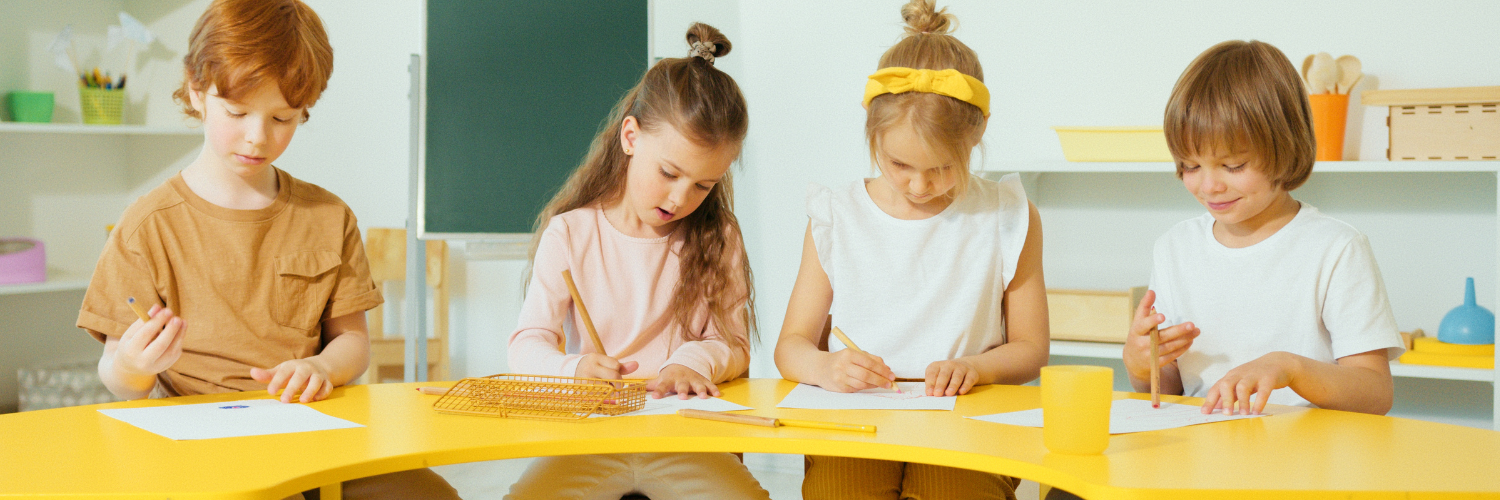Today I'm excited to share a special guest post from Sarah Perowne.* Thank you for these wonderful suggestions for unleashing children's imaginations, Sarah!
In a world full of distractions, nurturing a child's love for creativity and imagination can be super hard. As parents and educators, it's important to make learning fun, full of adventure and new experiences. When it comes to writing, there are so many amazing ways to be creative and get kids engaged.
Let's take a look at the best ways to creatively teach and nurture writing techniques to tap into your child's imagination.
Embrace Your Child's Interests
Let's get things going with one of the most magical aspects of nurturing a child's imagination: learning through their interests. Believe it or not, this is often an overlooked step! Kids, no matter how young they are, will start to develop likes and dislikes, meaning how they learn and what they want to learn will change.
Encourage children to write about what truly delights them, whether it's word games, mysterious adventures, or even the secret lives of their favorite stuffed animals. By aligning their creative goals with their passions, you not only motivate them but allow them to grow their curiosity!
Create a Writing Nook to Unleash Your Child's Imagination
Try to create a comfortable space for kids that they can use to write in. For active kids who prefer to sit on the floor or move around, you could lay cushions on the floor or buy a foldable lap table - this way, they can change their environment often and keep creativity flowing. You could even dedicate a section of the room for an "inspiration wall" full of pictures, artwork, quotes - anything that sparks creativity and motivates them.
Remember, every child is different, so creating a space that caters to their needs and preferences is key. Whether it's a flexible, ever-changing, creative nook on the floor or a more structured, permanent writing area, the goal is to foster an environment where your child feels inspired and excited to let their imagination run wild.
Build on Collaborative Storytelling
One of the best creative writing techniques is to build on collaborative storytelling. Take turns contributing to a story and building on each other's ideas, or play a word game like a word story, where each person builds on the story by adding one word at a time. For example, if I say "one," you might say "night." When you finish, write the story down. Younger kids who aren't quite ready for writing could even draw the story on a blank comic strip and act it out.
Use Different Writing Surfaces (not just paper)
A big white piece of paper can be scary for kids to write on, even if they're brimming with ideas. Consider using a more flexible surface like a whiteboard, where creative writing ideas can be edited and rubbed out. Bath time can also be a great time to work on concocting imaginative stories. Transform the bathroom into a storytelling haven by using washable markers on ceramic tiles.
Encourage your child to create characters, dialogue, or scenes that can be easily wiped away when it's time for a fresh start. Other ideas could be storytelling pebbles and rocks. Kids can write words, phrases, or verses on the stone with waterproof markers. These "word rocks" can then be arranged to form poems and stories whenever inspiration strikes.
Personify When You’re Out and About
Get out and about and get inspired by different locations. One of our greatest teachers is outside the house. Show your child that the world around us is almost as inspiring as the inner worlds of books by using personification when you're out and about.
From talking trees to outdoor creatures, each bustling street corner has a voice or tale to share. When you take your child out, prompt them to listen to the whispers of the leaves and imagine the conversations they are having to inspire their writing when they return. In the city, the ancient buildings could have a story to tell, while the hustle and bustle is a symphony of noise. Once they get home, their newfound perspective could help them craft their own stories. With more practice, they will soon discover inspiration and learn the art of storytelling.
Make Imaginative Prompts
Unleash your child's imagination with creative prompts. Show them a short video clip about their favorite animals to spark their imagination, and have them write a creative story about them. Equally, fill a clear mason jar with various small objects like buttons, mini toys, or family antiques and challenge them to create a story or mystery based on the objects in the jar.
For auditory learners, you could play different styles of music to spark their imaginations. Likewise, kinesthetic learners who prefer more hands-on learning might like to go outside and get inspired by natural prompts like constellations and ecosystems. Putting pen to paper this way means that kids can use their imagination to the max!
Show Your Child That Failure Isn't Scary
The biggest restriction to creativity? The feeling of failure! While grammar, spelling, and sentence structure are important, unrestricted writing opportunities can help children unleash their imaginations and go with the flow without worrying about what they're writing.
You could set a 30-second timer and encourage your child to practice free writing; if they struggle, try creative prompts. Once you finish, you could go over it and review it together using positive language. So, instead of saying, "I don't understand that," you could say, "What did you mean when you wrote that?." This positive language shift can be empowering and encourage kids to keep going.
Focus on the Creative Process, Not the Final Result
And finally…as adults, we are often so focused on the results or outcomes that we forget to show children the best part - the creative process itself. So, acknowledge and celebrate every step of the creative process, not just the final product. When your child completes a paragraph, a page, or even just a sentence, praise their efforts and encourage them to keep going.
Keep encouraging your child's imagination at every step, keep it fun, and let them know that making mistakes is all part of the adventure. Regardless of your child's interests, the ultimate goal is to guide them and inspire a lifelong love for learning and creativity.
*Sarah Perowne is a copywriter for Wordtips, a site dedicated to language topics and word finders like Word with Friends cheat tools. With over 10 years of experience in teaching, assisting, working with parents, writing, and curriculum development, she writes podcasts, articles, and blog posts on a wide range of compelling topics.




Comments ()